

In eukaryotes, DNA damage can be caused by both normal metabolic activities and environmental factors (such as UV and radiation) – resulting in up to 500,000 molecular damages per cell per day. These damages cause structural damage to DNA molecules, which can dramatically change the way genes are encoded and, in turn, affect the survival of daughter cells after mitosis. Therefore, during the long evolutionary process, a DNA repair mechanism – DNA damage response is formed. DNA repair must work constantly, in order to quickly correct any mistakes in the DNA structure.
The speed of DNA repair depends on many factors, such as cell type, cell aging, and external environment. However, as cells accumulate large amounts of DNA damage, the rate of DNA repair decreases until it can no longer keep up with the constant DNA damage. At this point, the cell may suffer from one of three fates: irreversible hibernation – so-called aging; cell suicide, which is apoptosis or programmed cell death; or uncontrolled cell division which may result in the formation of a tumor or cancer.
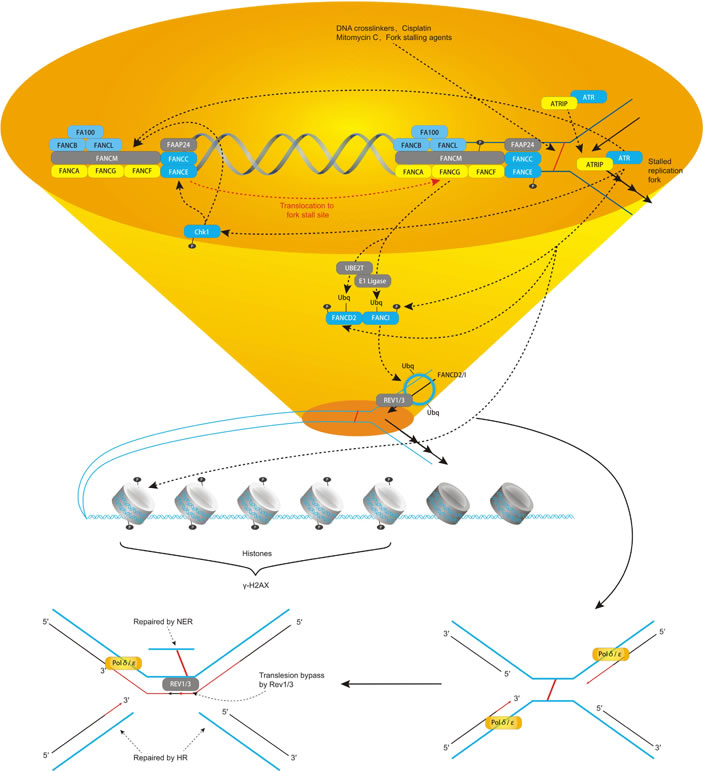
Covalent cross-linking between DNA strands can easily block DNA replication, transcription, and recombination. It is one of the most toxic types of DNA damage – easily killing cells that are replicating. One of the causes of cancer is the lack of ability to repair cross-links between DNA strands. It has now been found that the main reason for the high probability of cancer patients with Fanconi's anemia is due to the loss of this ability to repair. To date, at least 15 genes has been found to contribute to Fanconi anemia (FANCA, B, C, D1, D2, E, F, G, I, J, L, M, N, O, P). Among them, genes A, B, C, E, F, G, L, and M together form an ubiquitin ligase. The ligase results in the single ubiquitination of D2 and I, which in turn initiates the DNA crosslink recombination repair catalyzed by genes D1, J, N, O, and P. DNA strand crosslink repair is a very complicated pathway, known to involve in nucleic acid excision repair, homologous recombination repair, Fanconi anemia and other pathways.
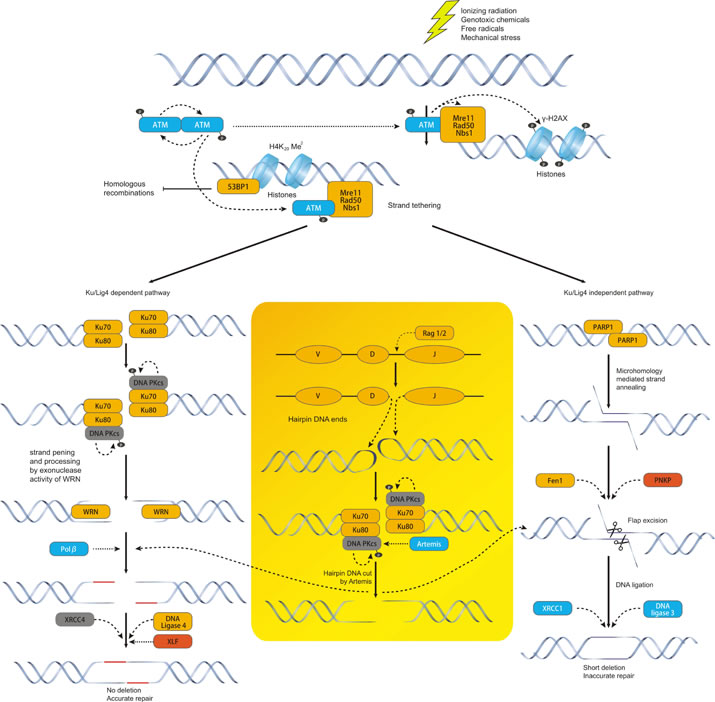
DNA double strand break (DSB) – a common type of cell damage – can be repaired by homologous recombination (HR) or non-homologous end joining (NHEJ). In NHEJ, the end of the DSB is first recognized by Ku. It is then processed by nuclease and polymerase with the aid of Ku and DNA-PKcs. Finally, the DSB is ligated by the IV-XRCC4-XLF ligase. Among these processes, Ku plays a clearer role in the initial identification and recruitment process. There are not any clear order to the subsequent processing and ligating processes – they are repetitive.
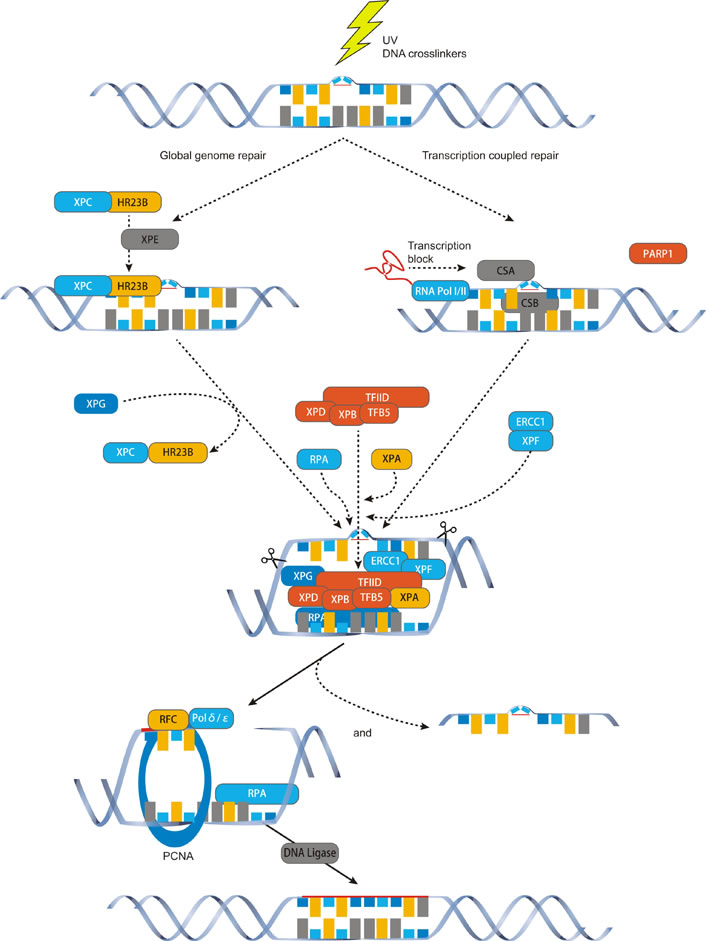
Nucleotide excision repair (NER) mainly repairs DNA damage that affects regional chromosomal structures, including UV-induced pyrimidine dimer, molecule-DNA-binding/protein-DNA-binding (DNA adducts), or DNA-DNA binding (DNA cross-link). Without these forms of damage being ruled out in time, DNA polymerases will not be able to identify and thus they will stay at the damage site. When this happens, the cells will then activate the cell cycle checkpoint to completely stop the cell cycle.
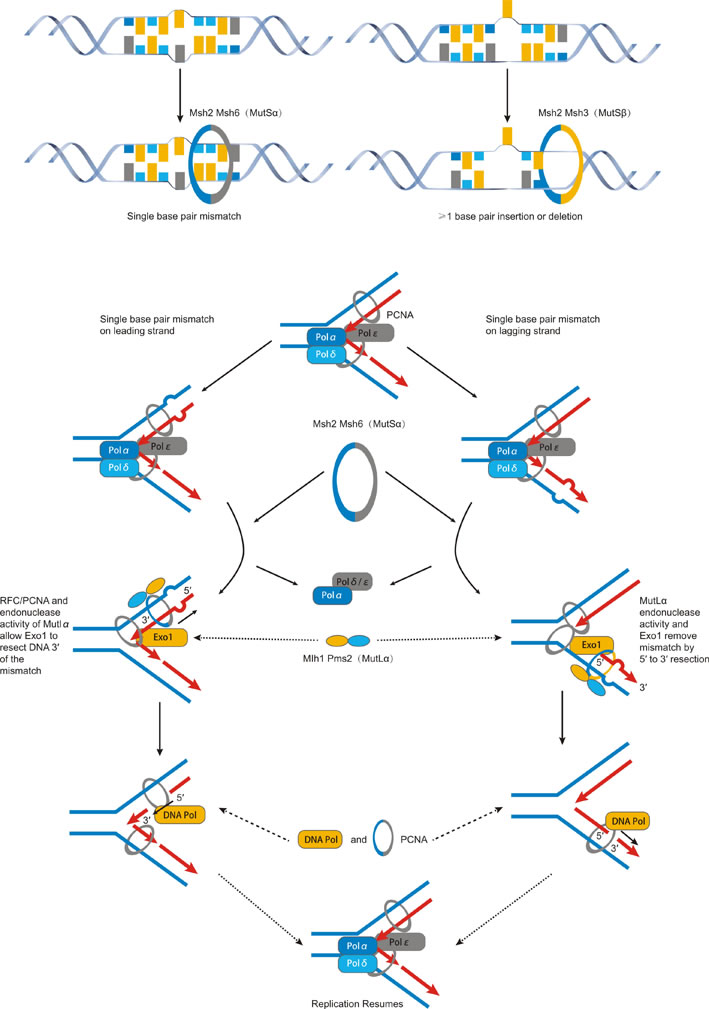
In the event of a mismatch during DNA replication, the cell recognizes the mismatch in the newly synthesized strand through an accurate mismatch repair system and repairs it, and the mismatch in the new DNA strand is almost completely corrected. The repair process is to identify the correct strand, remove the incorrect part, and then synthesize the correctly-paired double-stranded DNA through the reaction of DNA polymerase III and DNA ligase.
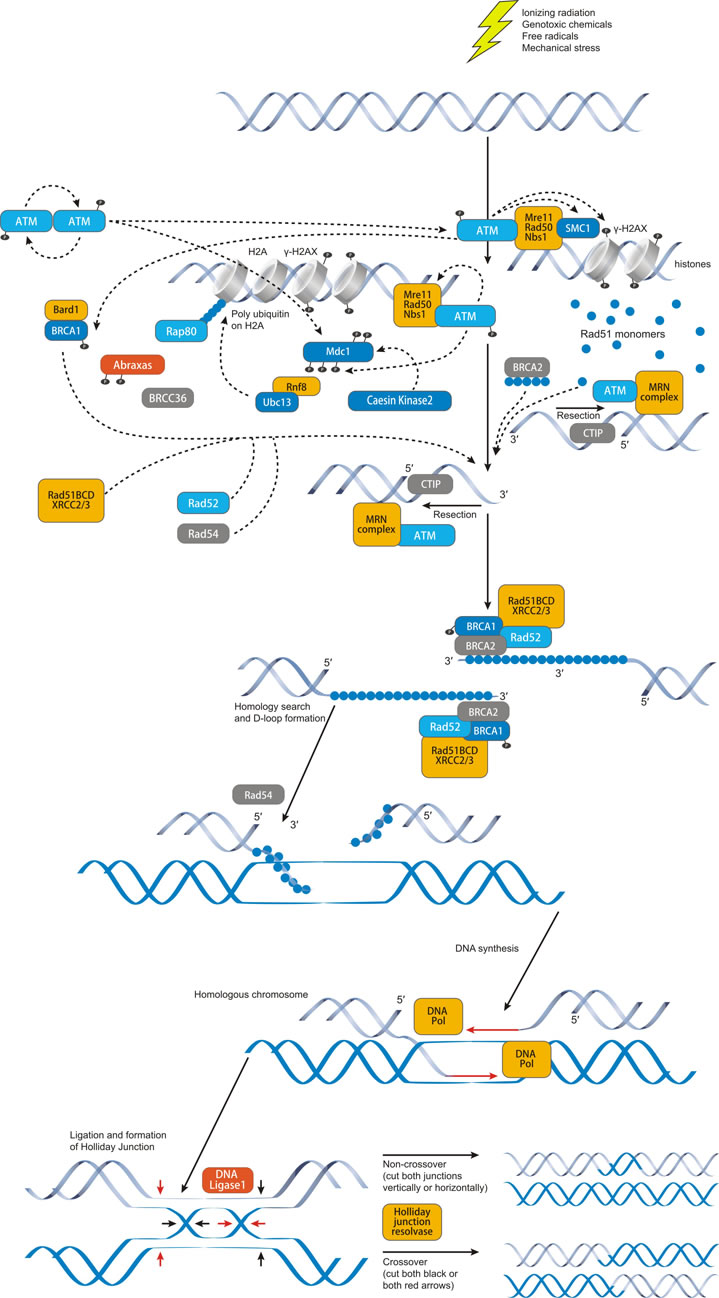
There are many types of DNA damage, with DNA strand breaks being the most serious. Homologous recombination repair (HRR) is the main way to repair DNA DSB injury, which is very important in the maintenance of the genome integrity of mammalian cells. HRR is regulated by RAD51, BRCA1, BRCA2 and other factors. The inactivation or step interruption of these factors will lead to chromosome rupture and cell death, and improper repairs may lead to chromosomal deletion, rearrangement, translocation and inversion – causing tumors and other diseases.